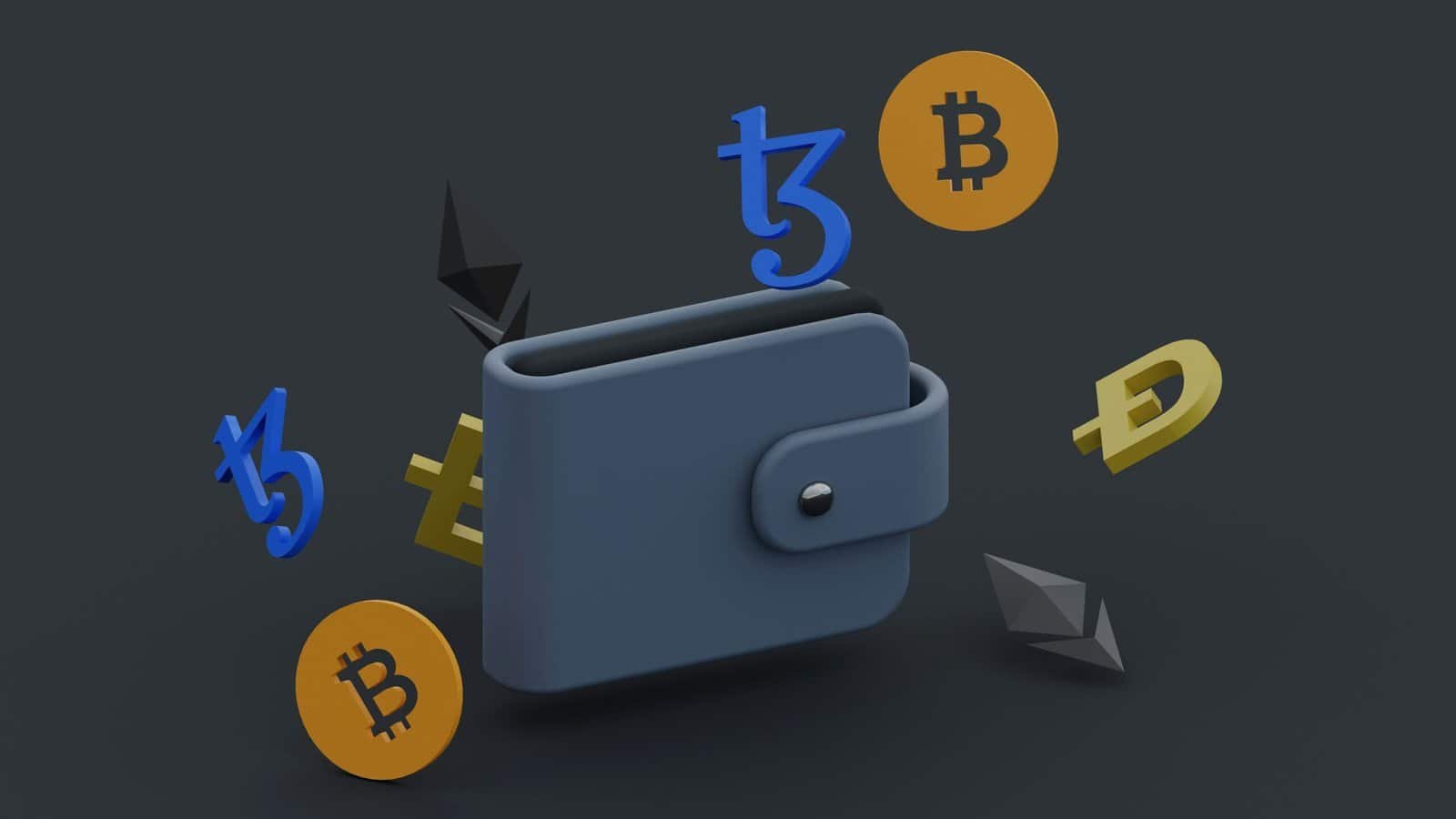Are you trying to turn your crypto assets into a steady stream of passive income but unsure which exchanges will give you the best balance of yield, safety, and convenience?
Which Exchanges Are Best For Earning Passive Income?
This article helps you compare centralized exchanges (CEXs), decentralized exchanges (DEXs), and lending/earning platforms so you can choose the places that match your goals and risk tolerance. You’ll get clear guidance on how different products work, which platforms are ideal for beginners or advanced users, and what risks you must manage.
What counts as passive income on an exchange?
Passive income on exchanges typically means earning returns on assets without actively trading them. Common mechanisms include staking, interest-bearing savings, lending, liquidity provision, and token rewards. You’ll see regular payouts or compounding returns while your assets remain locked or deposited.
Centralized Exchanges (CEXs): convenience and custodial earning
Centralized exchanges act as intermediaries and custody your crypto. They often offer easy-to-use products for passive income such as staking-as-a-service, flexible savings, and lending. This is the most user-friendly way to earn if you prefer simple onboarding and fiat on-ramps.
Pros and cons of using CEXs for passive income
You’ll appreciate convenience, customer support, and typically broad asset availability. However, you accept counterparty risk because the exchange controls the private keys. CEX yields can be lower than DeFi alternatives but often come with simpler interfaces and insurance arrangements.
Popular centralized exchanges for passive income
Below is a comparison table of major CEXs known for passive-income products. APY ranges are illustrative and change frequently.
| Exchange | Passive Income Products | Typical APY Range (illustrative) | Supported Assets (examples) | Key Strengths |
|---|---|---|---|---|
| Binance | Staking, Flexible/Locked Savings, Launchpool, Liquidity Farming | 0.5% – 20%+ | BTC, ETH, BNB, stablecoins, altcoins | High liquidity, many products, frequent promotions |
| Coinbase | Staking, USD Coin (USDC) rewards | 0.5% – 6% | ETH, SOL, ALGO, USDC | Strong regulatory compliance, easy UX |
| Kraken | Staking, Futures staking | 0.5% – 8% | ETH, ADA, DOT, SOL | Strong security, transparent staking terms |
| Crypto.com | Staking, Earn accounts, Syndicate | 1% – 12%+ | CRO, BTC, ETH, stablecoins | App-first experience, card integration |
| KuCoin | Soft staking, Pool-X, Earn | 1% – 15%+ | BTC, ETH, KCS, stablecoins | Wide asset support, higher-risk options |
| Gemini | Earn (note: availability varies by jurisdiction) | 0.5% – 7% | BTC, ETH, stablecoins | Emphasis on security & compliance |
How staking on CEXs typically works
When you stake on a CEX, the exchange pools customer assets to run validator nodes or lend to other services. You’ll usually earn rewards distributed by the exchange at scheduled intervals. Some platforms allow flexible (withdraw anytime) or locked (higher APY, fixed term) staking.
When to choose CEX staking
Pick a CEX if you want convenience, fiat on/off ramps, and customer support. CEXs are a great fit if you are just starting, prefer not to manage validator software, or want to earn on mainstream assets like ETH or ADA.

Decentralized Exchanges (DEXs) and DeFi: higher yields, more control
DEXs and decentralized protocols let you interact with smart contracts directly, often without KYC. Many DeFi services provide high yields because they distribute native token incentives and because liquidity is essential for protocol function.
Pros and cons of DeFi and DEXs for passive income
You’ll get potentially higher yields and retain custody of your keys if you self-custody. However, smart contract bugs, impermanent loss, and complexity are real risks. DeFi requires more technical knowledge and active monitoring.
Common DeFi passive income strategies
- Liquidity provision in AMMs (Uniswap, PancakeSwap)
- Yield farming (combining LP tokens with reward incentives)
- Staking native tokens to secure networks (via Lido, Rocket Pool)
- Lending and borrowing on protocols (Aave, Compound)
Popular DEXs and DeFi platforms
| Protocol | Passive Income Type | Typical Yield Range (illustrative) | Risk Profile |
|---|---|---|---|
| Uniswap | Liquidity provision | Variable (can be low to high) | Impermanent loss, smart contract risk |
| SushiSwap | LPs + farming incentives | Variable + token incentives | Similar to Uniswap, additional token rewards |
| Curve | Stablecoin pools (low IL) | 0.5% – 10%+ | Lower IL for stablecoins, protocol risk |
| Aave | Lending interest | 0.1% – 10%+ | Smart contract + liquidation risk |
| Lido | Liquid staking (ETH, SOL etc.) | Network staking APYs (ETH ~3%–7% etc.) | Smart contract + centralization risk |
When to pick DeFi
Choose DeFi if you’re comfortable with wallets, contract interactions, and accepting higher technical risk for potentially greater yields. DeFi is suitable if you want to self-custody, access novel tokens, or participate in governance.
Lending platforms and interest accounts (non-exchange specialized platforms)
Some platforms are not traditional exchanges but offer interest-bearing accounts: Nexo, Celsius (defunct previously), BlockFi (restructured). Their models vary—some lend to institutional counterparties, others implement margin lending.
Pros and cons
You can get attractive interest rates, sometimes with flexible withdrawals. But custodial risk, insolvency risk, and regulatory uncertainty matter. Check whether the platform has transparent reserve reporting and insurance.

How yields are calculated: APR vs APY and compounding
Understanding APY vs APR matters because compounding frequency affects your real returns. APR is simple interest; APY includes compounding. If rewards compound daily, your APY will be higher than the nominal APR.
Simple compound growth example
If you earn 6% APY, compounding frequency changes yearly returns slightly. Use the formula: A = P*(1 + r/n)^(n*t) Where A is amount, P is principal, r is annual rate, n is compounding periods per year, t is time in years.
You’ll find that small differences in APY become meaningful over multi-year horizons.
Risk considerations you must manage
Before committing assets, consider several risk types. Understanding them helps you choose the right platforms and strategies.
Counterparty and custodial risk
If the exchange holds your keys, it might freeze withdrawals or fail due to insolvency. You’re trusting the exchange’s security and balance-sheet practices.
Smart contract risk
DeFi protocols run code that can contain vulnerabilities. Audits help but are not a guarantee. You could lose funds if a contract is exploited.
Impermanent loss (IL)
When you provide liquidity to AMMs, price divergence between paired assets can cause IL. Stablecoin pools reduce IL, while volatile asset pairs increase it.
Regulatory risk
Regulatory actions can freeze assets, restrict products, or affect token listings. Location matters—choose platforms that operate within your regulatory comfort zone.
Slashing and network risk in staking
If validators misbehave, staked assets can be slashed (partial loss). Delegation services lower this risk but do not eliminate it entirely.
Liquidity and withdrawal delays
Lock-up periods, unstaking windows, and withdrawal limits can prevent immediate access to funds during market moves.

How to pick the best exchange for your goals
Choosing depends on your priorities: safety, yield, convenience, or control. Use the checklist below.
Decision checklist
- Do you want custody of keys? (Yes → DEX or self-staking; No → CEX)
- Is regulatory compliance important? (Yes → Coinbase, Kraken, Gemini)
- Do you need fiat on/off ramps? (Yes → major CEXs)
- Are you comfortable with smart contracts? (Yes → DeFi)
- How long can you lock funds? (Short-term → flexible products; Long-term → locked staking or LPs)
Recommended exchanges and platforms by user type
This section gives actionable suggestions based on typical user profiles.
Beginner, conservative — prioritize safety and simplicity
- Coinbase: beginner-friendly staking for a few PoS assets; strong compliance and UX.
- Kraken: straightforward staking, clear terms, strong security.
- Gemini: regulated exchange with emphasis on custody and security.
Why these? You’ll sacrifice top-of-market APYs for lower complexity and better customer support.
Intermediate, balanced — want decent yields with manageable complexity
- Binance: broad product catalog with savings, staking, and promotions.
- Crypto.com: app-first experience with flexible earn products and card integrations.
- Nexo: interest-bearing accounts with high liquidity (evaluate platform health and disclosures).
These choices give you more yield options while maintaining a relatively simple experience.
Advanced, yield-maximizer — comfortable with risk and technical steps
- Uniswap/SushiSwap/Curve: LPs and yield farming for higher upside; manage impermanent loss.
- Lido, Rocket Pool: liquid staking for ETH with staking derivatives (stETH, rETH).
- Aave/Compound: lending markets for variable yields and leverage strategies.
You’ll need wallets, gas-fee management, and active monitoring.

Practical step-by-step: how to start earning passive income on an exchange
Follow these steps to minimize mistakes and protect your capital.
- Define your goals: target APY, time horizon, and risk tolerance.
- Choose custody: CEX vs self-custody with wallet.
- Select platform(s): pick exchanges or protocols that match your needs and region.
- Complete KYC if required: this allows fiat transfers and some products.
- Deposit funds: consider using stablecoins for stable yields or diversified crypto for staking.
- Pick product: staking, flexible savings, locked staking, or liquidity pool.
- Understand terms: unstaking times, lockup periods, fees, APY calculation.
- Enable security: 2FA, withdrawal whitelist, hardware wallet for withdrawals.
- Monitor and rebalance: track rewards, reinvest or harvest periodically.
- Record transactions for taxes.
Security best practices
Protecting your funds is essential. Follow these basics:
- Use hardware wallets when self-custodying.
- Enable two-factor authentication (2FA) on exchanges.
- Use unique, strong passwords and a password manager.
- Set withdrawal whitelists on CEX accounts.
- Keep small amounts on exchanges and larger holdings in cold storage.
- Verify smart contract addresses and use reputable aggregators.

Taxes and reporting
Earning passive income usually triggers tax events. Rewards, staking payouts, interest, and harvested farming rewards can be taxable upon receipt or sale, depending on jurisdiction. Keep detailed records of:
- Dates and amounts of rewards
- Fair market value at receipt
- Cost basis and disposal events
Consult a tax professional for local rules.
Case studies: sample strategies and expected outcomes
These simplified examples show how various strategies may perform. All numbers are illustrative and not financial advice.
Conservative: exchange staking on Kraken
- Asset: 10 ETH
- Staking APY (illustrative): 4%
- Annual reward: 0.4 ETH You’ll get predictable rewards with low fuss. Unstaking may take days.
Balanced: flexible savings on Binance with stablecoins
- Asset: 10,000 USDC
- APY (illustrative): 5%
- Annual return: 500 USDC You’ll maintain liquidity while earning modest yield. Good for reallocating quickly.
Aggressive: LP + yield farming on Uniswap + reward token
- Asset: $10,000 split into token A and token B
- AMM fees + farming reward (illustrative combined): 20% APY
- Risks: potential impermanent loss, smart contract exposure This can deliver high returns but requires active tracking and risk tolerance.
Fees and costs to watch
Fees reduce your net yield. Consider:
- Trading fees for providing required token pairs
- Withdrawal fees and gas costs (especially on Ethereum)
- Performance fees or platform commissions
- Lockup penalties or early withdrawal fees
- Slippage when entering/exiting LP positions
Monitoring and automation tools
You can use portfolio trackers and DeFi dashboards to auto-monitor yields and performance. Tools like Zapper, Zerion, and DeFiLlama help you monitor across wallets and protocols. CEXs sometimes offer auto-compounding or scheduled payouts.
Frequently asked questions (FAQ)
Can you lose money while earning passive income?
Yes. Risks include exchange insolvency, smart contract hacks, impermanent loss, slashing, and price volatility. Even interest-bearing stablecoins carry counterparty risk.
Are higher APYs always better?
Not always. Higher APYs often mean higher risk—novel tokens, low liquidity, or experimental protocols. Always balance yield against risk.
Should you split funds between CEX and DEX?
Splitting can diversify counterparty and smart contract risk. Keep portion in cold storage or on reputable exchanges and portion in DeFi for higher yields if you understand the risks.
How often should you harvest and reinvest rewards?
This depends on fees. If gas or transaction costs are high, accumulate longer periods before reinvesting. For low-cost systems, frequent compounding improves APY.
Comparison summary table: quick view
| Platform Type | Ease of Use | Typical Yield | Custody | Best for |
|---|---|---|---|---|
| Major CEX (Coinbase, Kraken) | High | Low–Moderate | Custodial | Beginners, conservative savers |
| Large CEX (Binance, KuCoin) | Moderate | Moderate–High | Custodial | Intermediate users, many options |
| DeFi Protocols (Uniswap, Aave) | Low–Moderate | Variable–High | Self-custody | Advanced users seeking high yield |
| Liquid staking (Lido) | Moderate | Network staking APY | Partial self-custody (staked token) | ETH stakers wanting liquid tokens |
| Lending platforms (Nexo) | High | Moderate | Custodial | Earning on stablecoins or fiat-like assets |
Final recommendations: which exchanges are best for you?
- If you prioritize safety and simplicity: use Coinbase, Kraken, or Gemini. They are regulated, intuitive, and offer straightforward staking and rewards.
- If you want breadth of products and promos: Binance and Crypto.com give many ways to earn but require more diligence.
- If you want the highest potential yields and are comfortable with more risk: use DeFi protocols like Uniswap, Curve, Aave, and liquid staking providers like Lido.
- If you prefer a middle path with good mobile UX: consider Crypto.com or Nexo while verifying platform reserves, audits, and disclosures.
Closing thoughts
Earning passive income through exchanges can be a powerful way to grow your crypto holdings, but it is not without trade-offs. You’ll need to match your strategy to your risk tolerance, technical skill, and time horizon. Start small, learn the mechanics of each product, and prioritize security and record-keeping so your passive income remains sustainable and manageable.
If you’d like, tell me your comfort level with risk and whether you prefer custodial or self-custody, and I’ll suggest a tailored shortlist of platforms and products for you.
